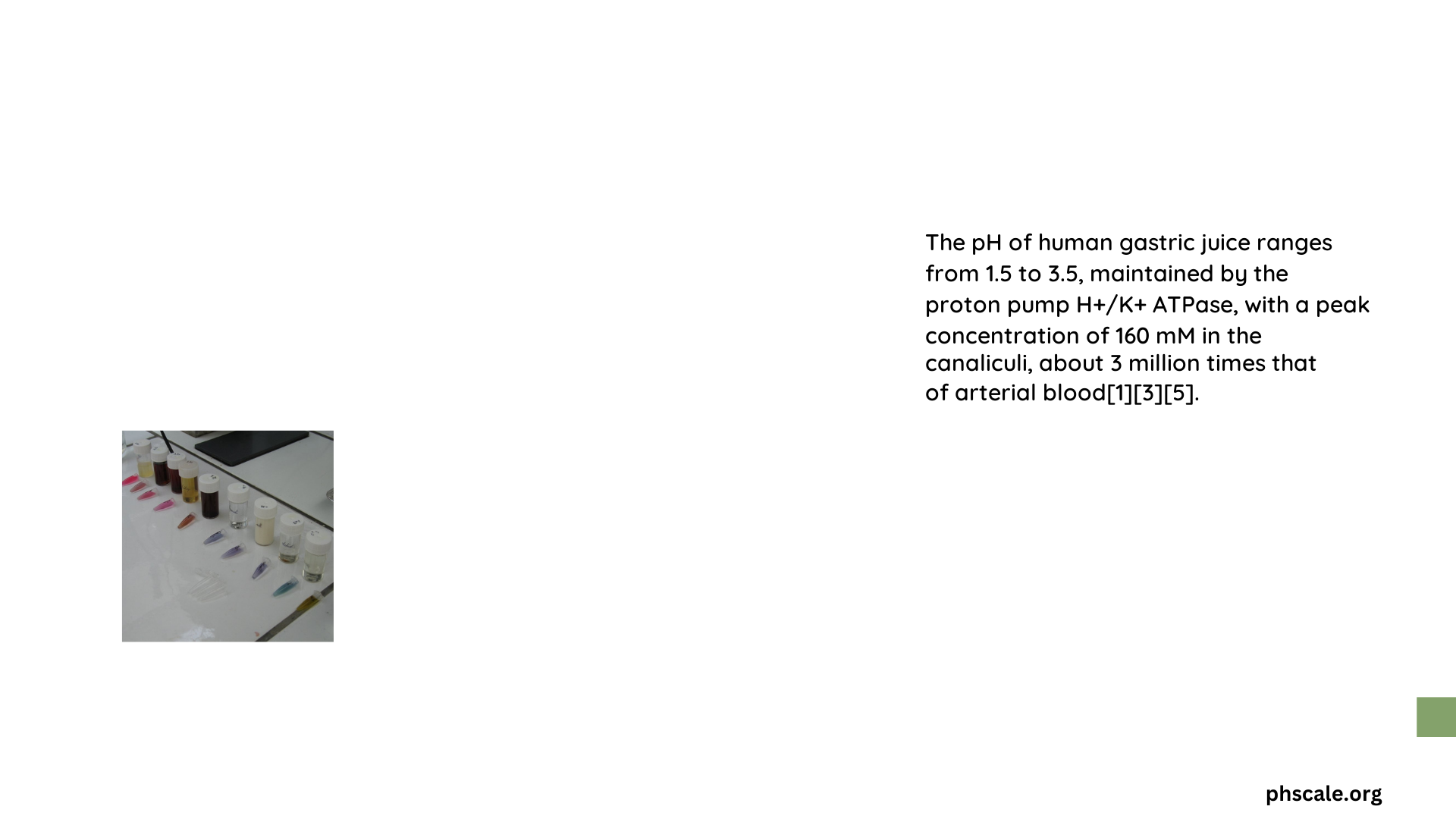Human gastric juice pH is a critical factor in digestive health, typically ranging from highly acidic (pH 1-2) during fasting to mildly acidic (pH 4-5) after meals. This dynamic pH environment is essential for protein digestion, nutrient absorption, and protection against pathogens. Understanding gastric juice pH is crucial for diagnosing and treating various gastrointestinal disorders.
What is the Normal pH Range of Human Gastric Juice?
The pH of human gastric juice varies depending on several factors, primarily whether a person has recently eaten or is in a fasting state.
- Fasting State: 1.0 – 2.0
- Postprandial State (after eating): 4.0 – 5.0
This variation is due to the buffering effect of food and the dynamic nature of gastric secretions. Let’s break down these states further:
Fasting State pH
During fasting, the stomach produces a small amount of gastric juice with a very low pH. This highly acidic environment serves several purposes:
- Sterilization of the stomach contents
- Activation of pepsinogen to pepsin (a protein-digesting enzyme)
- Preparation for food intake
Postprandial State pH
After eating, the pH of gastric juice rises due to:
- Dilution by food and liquids
- Buffering effect of proteins and other food components
- Increased production of bicarbonate-rich mucus
This temporary increase in pH allows for initial digestion processes to begin before the stomach gradually returns to its more acidic state.
What Factors Influence Human Gastric Juice pH?

Several factors can affect the pH of human gastric juice:
- Diet: The type and quantity of food consumed can significantly impact gastric pH.
- Age: Gastric acid secretion tends to decrease with age.
- Medications: Certain drugs, especially proton pump inhibitors and H2 blockers, can raise gastric pH.
- Stress: Can increase acid production, lowering pH.
- Hormones: Gastrin stimulates acid secretion, while secretin inhibits it.
- Hydration: Adequate fluid intake helps maintain proper gastric juice composition.
Table: Factors Affecting Gastric Juice pH
| Factor | Effect on pH | Mechanism |
|---|---|---|
| High-protein meal | Temporary increase | Buffering effect |
| Stress | Decrease | Increased acid secretion |
| Proton pump inhibitors | Increase | Reduced acid production |
| Dehydration | Slight decrease | Concentrated gastric juice |
| Aging | Gradual increase | Reduced acid secretion capacity |
How is Gastric Juice pH Measured?
Measuring gastric juice pH accurately is crucial for diagnosing and monitoring various gastrointestinal conditions. Several methods are employed:
- Gastric Aspiration: Direct sampling of gastric contents through a nasogastric tube.
- pH Probes: Inserted through the nose or mouth to measure pH in real-time.
- Heidelberg Capsule Test: A swallowable capsule that transmits pH data wirelessly.
- Endoscopy: Allows for visual inspection and pH measurement of the stomach lining.
Each method has its advantages and limitations, and the choice often depends on the specific clinical scenario.
Why is Maintaining Proper Gastric Juice pH Important?
The pH of gastric juice plays a crucial role in several physiological processes:
- Protein Digestion: Pepsin, the main protein-digesting enzyme in the stomach, requires a low pH to function optimally.
- Nutrient Absorption: Proper pH levels facilitate the absorption of certain nutrients, particularly iron and vitamin B12.
- Pathogen Defense: The acidic environment helps kill harmful bacteria and other microorganisms.
- Hormone Regulation: Gastric pH influences the release of various digestive hormones.
List: Consequences of Abnormal Gastric pH
- Too Low (Hyperacidity):
- Increased risk of gastric and duodenal ulcers
- Gastroesophageal reflux disease (GERD)
-
Erosion of tooth enamel if reflux occurs
-
Too High (Hypoacidity):
- Impaired protein digestion
- Increased risk of bacterial overgrowth
- Potential nutrient deficiencies (e.g., iron, vitamin B12)
What Conditions Can Affect Human Gastric Juice pH?
Several medical conditions can alter the normal pH of gastric juice:
- Gastritis: Inflammation of the stomach lining can lead to changes in acid production.
- Peptic Ulcers: Often associated with H. pylori infection, which can alter gastric pH.
- Zollinger-Ellison Syndrome: Causes excessive acid production due to gastrin-secreting tumors.
- Pernicious Anemia: Results in decreased acid production due to autoimmune destruction of parietal cells.
- Gastric Cancer: Can affect the stomach’s ability to produce acid normally.
Understanding these conditions and their effects on gastric pH is crucial for proper diagnosis and treatment.
How Can Gastric Juice pH Be Regulated?
Regulating gastric juice pH can be important in treating various gastrointestinal disorders. Methods include:
- Dietary Modifications: Avoiding trigger foods, eating smaller meals.
- Medications:
- Proton Pump Inhibitors (PPIs): Reduce acid production
- H2 Receptor Antagonists: Block histamine’s acid-stimulating effects
- Antacids: Neutralize stomach acid
- Lifestyle Changes: Stress reduction, weight management, avoiding late-night meals.
- Hydration: Maintaining proper fluid intake to support healthy gastric function.
It’s important to note that any attempts to regulate gastric pH should be done under medical supervision, as the stomach’s acidic environment serves important protective and digestive functions.
Conclusion
Understanding human gastric juice pH is fundamental to gastrointestinal health and function. The dynamic nature of stomach acidity, influenced by factors such as diet, medications, and underlying health conditions, plays a crucial role in digestion, nutrient absorption, and protection against pathogens. By maintaining awareness of the factors affecting gastric pH and seeking appropriate medical care when necessary, individuals can support their digestive health and overall well-being.
References
- Dressman et al., (1990) – Upper gastrointestinal (GI) pH in young, healthy men and women
- McConnell EL, Basit AW, Murdan S. (2008) – Measurements of rat and mouse gastrointestinal pH, fluid and lymphoid tissue, and implications for in-vivo experiments
- Dual gastric and esophageal pH tracings – Unbuffered highly acidic gastric juice exists at the gastroesophageal junction
- Schubert ML. (2014) – Gastric secretion
- Martinsen TC, Bergh K, Waldum HL. (2005) – Gastric juice: a barrier against infectious diseases
